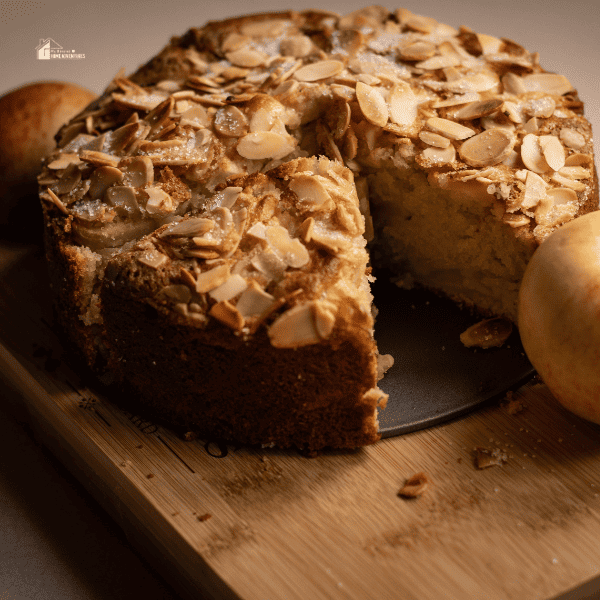How to Thaw Frozen Eggnog
This post may contain affiliate links which might earn us money. Please read my Disclosure and Privacy policies hereThere's nothing quite like a refreshing glass of eggnog, especially during the holiday season. But what do you do if you find yourself with a frozen carton of eggnog? Thawing frozen eggnog properly is essential to ensure its taste and quality are preserved.
This article will explore the importance of thawing frozen eggnog and provide helpful tips to prevent spoilage during defrosting.

The importance of thawing frozen eggnog properly
When it comes to frozen eggnog, thawing it properly is crucial for several reasons:
- Preserving flavor and texture: Improper thawing can result in a grainy or watery consistency, affecting the overall taste and enjoyment of the beverage. Thawing frozen eggnog slowly and gently will help retain its smooth and velvety texture.
- Ensuring food safety: Eggnog contains eggs and dairy, which are perishable ingredients. Bacterial growth and foodborne illnesses are at risk if not thawed and handled correctly. Thawing frozen eggnog at a safe temperature and following hygiene practices are essential to prevent spoilage and maintain food safety.
Tips for preventing spoilage during the defrosting process
Follow these tips to thaw frozen eggnog properly and prevent spoilage:
- Refrigerator thawing: The best way to thaw frozen eggnog is to transfer it from the freezer to the refrigerator. Allow it to thaw slowly and evenly overnight or for several hours until completely defrosted. This method helps maintain the quality and safety of the eggnog.
- Avoid room temperature thawing: It is not recommended to thaw frozen eggnog at room temperature, as this can lead to bacterial growth. The eggnog may also become too warm, affecting its taste and quality.
- Use cold water bath: If you need to thaw frozen eggnog quickly, you can place the tightly sealed container in a sink or bowl filled with cold water. Change the water every 30 minutes until the eggnog is defrosted. Be cautious not to let any water enter the container.
Following these tips, you can safely thaw your frozen eggnog and preserve its delicious flavor and creamy texture. So, the next time you find yourself with a frozen carton of eggnog, you know exactly what to do!
You might enjoy these posts:
How to Thaw Frozen Eggnog
Thawing in the Refrigerator
The refrigerator is your best friend when it's time to enjoy your delicious frozen eggnog. Thawing eggnog in the refrigerator is the safest and most effective method, ensuring your drink maintains its flavor and quality.
Steps to follow for safe and effective thawing
Here's how to properly thaw your frozen eggnog in the refrigerator:
- Take the frozen eggnog container from the freezer and place it in the refrigerator.
- Allow the eggnog to thaw slowly in the refrigerator. This process can take anywhere from 24 to 48 hours, depending on the quantity of eggnog and the temperature of your refrigerator.
- Refraining from shaking or stirring the eggnog during the thawing process is important. Let it thaw naturally without any agitation.
- Once the eggnog has completely thawed, please give it a gentle stir to incorporate any separation that may have occurred during the thawing process.
Using the refrigerator method, you can safely thaw your eggnog and retain its flavor and texture without compromise.

Avoiding Room Temperature Defrosting
Thawing eggnog at room temperature is not advisable as it poses a risk of bacterial growth and spoilage. Eggnog contains dairy and eggs, which are highly perishable ingredients that need proper temperature control to prevent the growth of harmful bacteria.
Defrosting eggnog at room temperature can lead to the following issues:
- Bacterial growth: Warm room temperatures provide an ideal breeding ground for bacteria, which can multiply rapidly and cause foodborne illnesses if consumed.
- Spoilage: Eggnog that is defrosted at room temperature may spoil more quickly, resulting in an unpleasant taste and potential health risks.
To ensure the safety and quality of your eggnog, stick to thawing it in the refrigerator rather than leaving it at room temperature.
Remember, taking the time to thaw your frozen eggnog properly will reward you with a delicious and safe holiday treat!
Packaging and Storage
Have you ever found yourself with leftover eggnog after the holiday season? Freezing it is a great option to enjoy this delicious treat throughout the year. However, proper packaging and storage are essential to maintain its taste and quality. Here are a few tips to guide you.
Before freezing the eggnog, allow it to cool completely. Placing warm or hot eggnog in the freezer can lead to improper freezing and affect the texture and taste. Once cooled, pour the eggnog into freezer-friendly containers or bags. This step ensures convenient portions when thawing.
Allowing the eggnog to cool prevents condensation and ice crystals from forming during freezing. This ensures a smoother texture when thawed.
Opt for containers or bags specifically designed for freezing. These should be airtight to prevent freezer burn. Glass jars or plastic containers with tight-fitting lids are ideal. Alternatively, you can use heavy-duty freezer bags, removing as much air as possible before sealing them.
Leave some headspace in the containers or bags to accommodate expansion during freezing. Eggnog expands as it freezes, and the container may burst or leak without sufficient headspace. Aim for about an inch of space at the top.
The importance of leaving space for expansion during freezing
Allowing room for expansion prevents containers from cracking or bursting, ensuring your eggnog remains safe and intact.
Ensuring a tight seal to prevent leaks or contamination
Make sure the containers or bags are tightly sealed to prevent air from entering and freezer burn from occurring. If using bags, squeeze out any excess air before sealing them securely.
Remember to label each container or bag with the date of freezing to keep track of freshness. Properly packaged and stored, frozen eggnog can last up to three months. Enjoy the delightful taste of homemade eggnog whenever you desire.
Using Thawed Eggnog
Thawing frozen eggnog is a simple process that allows you to enjoy this delightful holiday treat.
Shelf Life and Consumption
It is important to know how long it can be stored in the refrigerator if you have frozen eggnog. Generally, thawed eggnog can be kept in the fridge for up to 3-4 days. Consuming it within this time frame is crucial to ensure freshness and quality.
When using thawed eggnog, it's always a good idea to give it a good stir or shake before pouring. This will help redistribute any separated ingredients and ensure a smooth and creamy consistency.

Alternatives to Freezing
If you find yourself frequently having leftover eggnog, freezing it might not be the most convenient option. Alternatively, you can consider using canned eggnog. Canned eggnog is available in many grocery stores and provides a longer shelf life compared to homemade or store-bought options.
To store canned eggnog for extended periods, keep it in a cool and dark place, like your pantry or cellar. Make sure to check the expiry date on the can and consume it before that date. Once opened, refrigerate any remaining eggnog and use it within the recommended time frame mentioned on the packaging.
Frozen eggnog can still be enjoyed, but following proper thawing and storage guidelines is essential to maintain its taste and quality. So, the next time you're in the mood for some eggnog, don't let frozen eggnog hold you back. Thaw it properly, give it a good stir, and enjoy this festive treat to the fullest!








